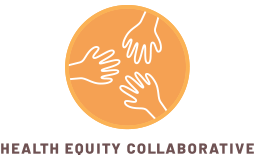14 Oct The Cost of Complacency: Funding Cuts, Misinformation, and the Threat to Vaccine Progress
The COVID-19 pandemic vividly exposed a critical truth: vaccines are one of the most effective tools for advancing public health and reducing deep-seated health disparities. From the front lines of the pandemic response, organizations saw firsthand how bringing vaccines and health services into trusted community spaces, like Black churches, saved lives and fostered lasting trust.
Yet, this progress is now at risk. A new report from the Health Equity Collaborative, Building Resilient Communities: How Vaccines Are Empowering Diverse Communities to Achieve Lasting Health, outlines a dangerous trend: vaccine funding cuts and the spread of misinformation are threatening decades of hard-won health gains, especially in low-income, rural, and minority communities.
The Unstoppable Impact of Vaccines
Vaccines have already radically reduced the incidence of deadly diseases and driven economic progress by lowering healthcare costs and increasing workforce productivity. For diverse communities, vaccines have significantly reduced illness, death, and existing disparities.
Examples of this monumental impact include:
- Polio: Vaccination helped eradicate disparities historically affecting poor and rural communities.
- Measles: Vaccination efforts targeting low-income and immigrant communities have been shown to increase uptake and narrow health disparities.
- Hepatitis B: Vaccination is a crucial tool in preventing chronic liver disease, which disproportionately affects Asian American and Pacific Islander (AAPI) and American Indian and Alaska Native (AI/AN) populations.
When the COVID-19 vaccine was deployed, including culturally tailored outreach and trusted messenger programs, it was vital in closing vaccine gaps and reducing severe outcomes in marginalized communities.
The High Cost of Inaction
Current funding cuts are rolling back this progress. The abrupt cancellation of billions in COVID-era federal grants has led to the cancellation of vaccination clinics, including those in underserved communities. Misinformation has also allowed vaccine hesitancy to persist, particularly among historically underserved populations.
If funding is not restored and vaccine hesitancy persists, we stand to lose a great deal:
- Adverse Public Health Outcomes: Failure to sustain access and outreach programs leads to measurable increases in preventable diseases. Historical data shows that during the 1989–1991 measles resurgence, poor, Black, Hispanic, or American Indian children were 3 to 16 times more likely to contract measles than non-Hispanic White children.
- Soaring Economic Costs: Declining vaccination coverage causes the financial toll to skyrocket from increased hospitalizations and lost income. Routine childhood immunizations are projected to avert $780 billion in direct healthcare costs and generate a positive net return of approximately $2.7 trillion. The financial burdens of vaccine-preventable illnesses disproportionately affect low-income families.
- Disempowerment: Underfunding vaccine access is a form of passive healthcare deprivation that signals the health of marginalized communities is not a societal priority.
A Path Forward: Investing in Community Solutions
Reversing these harmful trends requires targeted, sustained investment. The report calls for a comprehensive approach focusing on four key pillars:
- Restore & Protect Vaccine Funding: Reinstate cuts to CDC immunization programs and establish federal/state emergency funds for community-based vaccination infrastructure like mobile units.
- Engage Trusted Messengers: Fund Community Health Workers (CHWs) as vaccine advocates and support bilingual, culturally attuned education campaigns.
- Build Community-Led Infrastructure: Create vaccine equity task forces with public health officials, educators, and faith leaders to co-design solutions.
- Leverage Technology Responsibly: Use data analytics to identify and target “vaccine deserts” and counter misinformation through partnerships with trusted local influencers.
The evidence is clear: vaccine access is not just a public health priority—it is a moral, economic, and societal imperative. Now is the moment for policymakers, public health leaders, and advocates to shift from crisis reaction to sustainable prevention, ensuring lasting solutions that empower every community.


